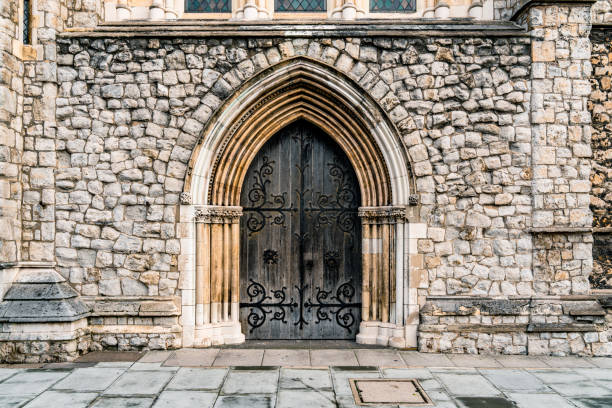Introduction
The entrance of a home defines its first impression, setting the tone for both interior and exterior aesthetics. Among the most elegant options available, arched exterior doors stand out for their unique architectural appeal. Their curved tops introduce softness, grandeur, and sophistication, transforming any entryway into a focal point.
Beyond visual charm, these doors offer durability, security, and versatility. They are suitable for various architectural styles, including traditional, Mediterranean, Tudor, and modern designs. This guide covers every aspect, from materials and styles to installation, benefits, and maintenance.
History of Arched Exterior Doors
Arched doors date back centuries, originating in classical and medieval architecture. Roman and Gothic structures widely used arches due to their structural strength and aesthetic appeal. Over time, the arched shape became symbolic of elegance, often incorporated into churches, castles, and luxury estates. Today, contemporary designs continue to draw inspiration from these historic arches, blending traditional craftsmanship with modern materials and finishes.
Key Features of Arched Exterior Doors
- Curved Design: Distinctive arch shape enhances visual appeal.
- Material Versatility: Available in wood, fiberglass, steel, and composite options.
- Customization: Doors can include glass panels, sidelights, or decorative trims.
- Structural Strength: Curved design distributes weight effectively, improving stability.
- Architectural Flexibility: Complements both classic and modern home styles.
Materials Used in Arched Exterior Doors
Wood
Wood provides natural beauty, warmth, and classic elegance. Common choices include mahogany, oak, and cherry. Solid wood arches can be stained or painted to complement the home’s exterior.
Fiberglass
Fiberglass arched doors offer durability and low maintenance. They mimic wood textures while resisting warping, cracking, and moisture damage. Fiberglass is also energy-efficient, reducing heat loss.
Steel
Steel doors provide maximum security and strength. With a powder-coated finish, they resist rust, weathering, and corrosion. Steel can also be shaped into intricate arched designs for a modern or industrial look.
Composite
Composite doors combine wood fibers and synthetic materials, offering low maintenance with the visual appeal of wood. They are resistant to environmental changes, making them ideal for various climates.
Styles of Arched Exterior Doors
Traditional Arched Doors
Raised panels, carved motifs, and decorative trims highlight classic architectural design.
Modern Minimalist Arches
Smooth curves and clean finishes create a sleek, contemporary appearance suitable for modern homes.
Glass-Integrated Arches
Incorporating frosted, etched, or stained glass adds elegance while allowing natural light into the home.
Double Arched Doors
Perfect for larger entryways, double doors provide grandeur, symmetry, and increased accessibility.
Mediterranean and Tuscan Styles
Warm tones, rustic finishes, and detailed carvings reflect traditional European aesthetics.
Benefits of Installing Arched Exterior Doors
- Visual Appeal: Unique shape elevates curb appeal and sets homes apart.
- Structural Integrity: Arch distributes weight evenly, reducing stress on the frame.
- Energy Efficiency: Modern materials and weatherproofing minimize energy loss.
- Increased Property Value: Adds sophistication and investment potential.
- Customization Options: Tailored finishes, glass panels, and hardware enhance style.
Factors to Consider Before Buying
- Material Selection: Choose based on durability, climate, and maintenance preferences.
- Arch Shape: Options include full arch, segmental, or Gothic curves.
- Door Size: Accurate measurements are critical for a proper fit.
- Security Needs: Reinforced frames, strong locks, and tempered glass improve safety.
- Style Compatibility: Ensure the arch complements existing architecture and exterior design.
Installation Process
Step 1: Measuring the Opening
Measure both height and width precisely, accounting for the arch curve.
Step 2: Frame Preparation
Ensure the doorway is level and structurally reinforced to handle weight.
Step 3: Positioning the Door
Place the door carefully, using shims and supports to maintain alignment with the arch.
Step 4: Secure Hinges and Hardware
Properly attach hinges to ensure smooth operation and long-term stability.
Step 5: Weatherproofing
Seal gaps and add weatherstripping to prevent drafts and water infiltration.
Maintenance Tips
- Cleaning: Use mild soap and water for routine maintenance.
- Inspection: Check for cracks, warping, or paint deterioration regularly.
- Finish Renewal: Repaint, stain, or apply sealants as needed to protect wood or composite doors.
- Lubricate Hardware: Hinges, locks, and handles should be lubricated periodically.
- Protect from Moisture: For wooden doors, ensure proper drainage and avoid direct water pooling.
Energy Efficiency Considerations
Insulated cores and weatherstripping improve thermal performance. Fiberglass and steel arched doors are particularly effective, maintaining indoor temperatures while reducing energy costs. Glass inserts should be double- or triple-pane to enhance insulation.
Security Features
- Reinforced Frames: Provide resistance to forced entry.
- Multi-Point Locking Systems: Increase security for residential and commercial properties.
- Tempered or Laminated Glass: Prevents break-ins while maintaining aesthetics.
- Door Viewers and Smart Locks: Modern options add convenience and security simultaneously.
Styling and Finishing Options
- Staining: Highlights the natural grain of wood and enhances warmth.
- Painting: Offers a wide color palette to match exterior walls or trim.
- Glass Inserts: Decorative, frosted, or etched designs enhance light entry and style.
- Custom Carvings: Intricate patterns and motifs add uniqueness and luxury.
- Hardware Choices: Handles, knobs, and hinges can complement door finishes for cohesive design.
Comparing Arched Doors with Rectangular Doors
- Rectangular Doors: Simple, easy to manufacture, and cost-effective.
- Arched Doors: More aesthetically unique, enhance property value, and improve architectural appeal.
While rectangular doors may suffice for minimalistic homes, arched doors create a statement that elevates curb appeal and distinguishes properties.
Cost Considerations
- Wood Arched Doors: Higher cost due to craftsmanship and material quality.
- Fiberglass Arched Doors: Moderate to high, offers low maintenance and durability.
- Steel Arched Doors: Mid-range, strong and secure but may require professional finishing.
- Composite Arched Doors: Affordable option with good performance and aesthetic versatility.
Customizations such as glass panels or elaborate carvings increase costs but significantly enhance visual appeal.
Applications of Arched Exterior Doors
- Residential Entrances: Main doors, side entries, and back doors.
- Commercial Properties: Office lobbies, hotels, and boutique entrances.
- Historic Homes: Restoring or replicating traditional architecture.
- Luxury Residences: Creating grand entrances with double arched doors.
- Specialty Buildings: Churches, museums, and estates frequently feature arched entrances.
Frequently Asked Questions
Q1: How long do arched exterior doors last?
Wooden doors can last 20–30 years with proper care, while fiberglass and steel models may last 30–50 years.
Q2: Can arched doors be customized?
Yes, customization includes glass inserts, carvings, paint, stain, and hardware selection.
Q3: Are fiberglass arched doors better than wood?
Fiberglass requires less maintenance, resists warping and cracking, and offers excellent energy efficiency.
Q4: Can double arched doors be installed in homes?
Yes, they create wider entryways and add grandeur to residential properties.
Q5: How do I maintain an arched wooden door?
Regular cleaning, sealing, repainting, and inspecting hardware help maintain durability and appearance.
Q6: Are arched exterior doors energy efficient?
Insulated cores, weatherstripping, and double-pane glass inserts enhance energy performance.
Q7: Do arched doors require professional installation?
Professional installation ensures accurate fitting, proper alignment, and long-term stability, especially for complex arches.
Q8: Can arched doors increase home value?
Yes, their aesthetic appeal, customization options, and durability enhance property value.

